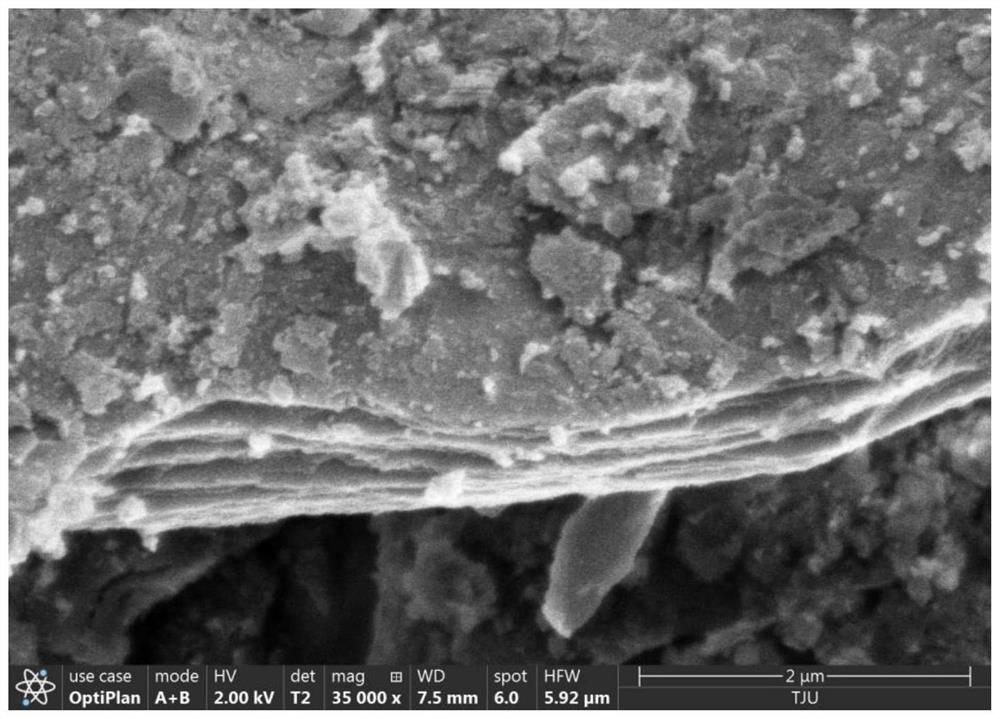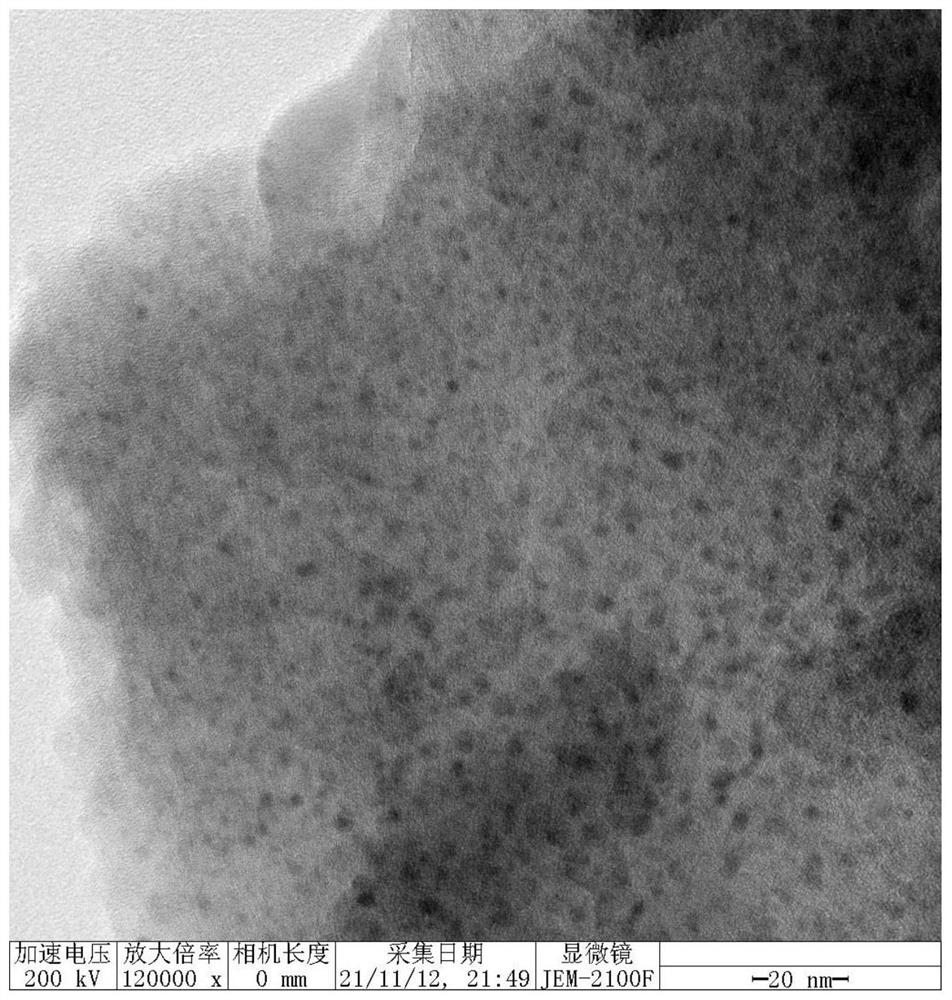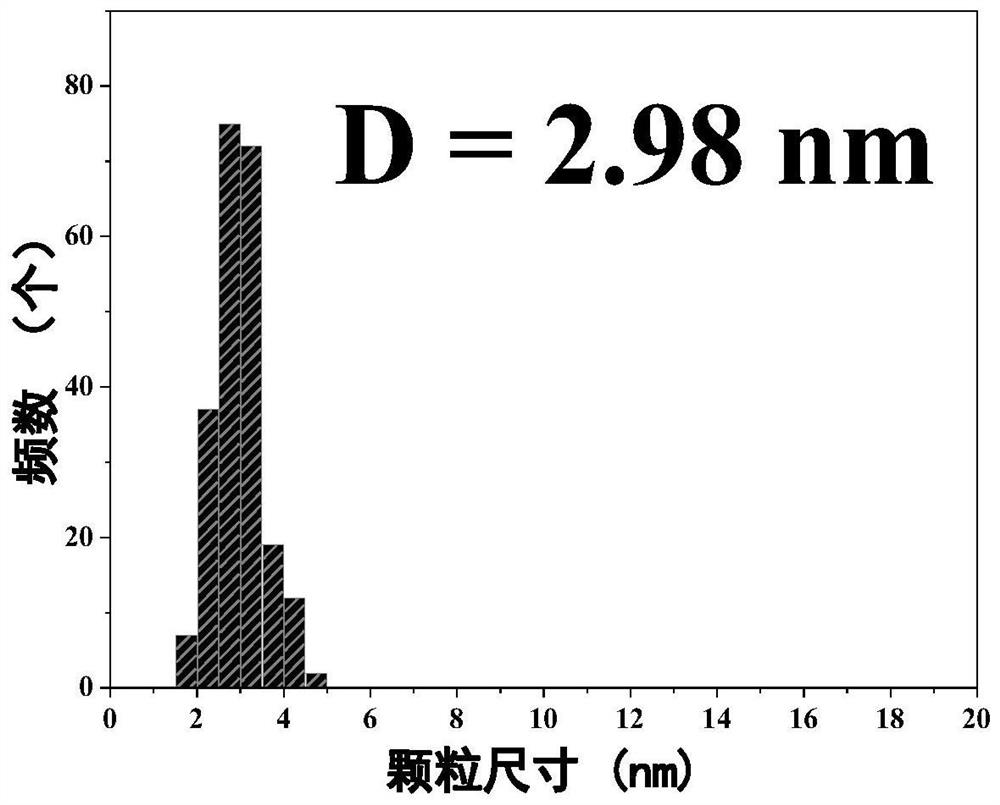Preparation method of acidified two-dimensional layered vermiculite loaded nickel-based catalyst
A two-dimensional layered catalyst technology, applied in physical/chemical process catalysts, chemical instruments and methods, metal/metal oxide/metal hydroxide catalysts, etc., can solve the problem of affecting the molecular diffusion of reactants and products and reducing the reaction Activity, active center reduction and other issues, to achieve good anti-carbon performance, optimization of acidification concentration, and improved stability
- Summary
- Abstract
- Description
- Claims
- Application Information
AI Technical Summary
Problems solved by technology
Method used
Image
Examples
Embodiment 1
[0037] Preparation of acidified two-dimensional layered porous vermiculite: Mix 10 g of ball-milled commercial expanded vermiculite (100 mesh) with 200 mL of 2.5 mol / L hydrochloric acid solution to prepare a suspension with a solid-to-liquid ratio of 1:20, 2.5 mol / L L hydrochloric acid is prepared by dissolving 50mL of 36-38% concentrated hydrochloric acid in 200mL of deionized water. The suspension was vigorously stirred and refluxed at 80°C at a speed of 800rpm for 4h; the obtained bright yellow precipitate was filtered and washed with deionized water until the filtrate was neutral, and the obtained solid was dried overnight at 100°C to obtain 2.5mol / L hydrochloric acid treated vermiculite powder carrier.
[0038]Preparation of acidified two-dimensional layered porous vermiculite-supported nickel-based catalyst: take 1 g of the acid-treated vermiculite powder carrier prepared above, vacuum-dry at 80°C to remove water vapor in the pores, and test the water absorption. The sp...
Embodiment 2
[0042] Preparation of acidified two-dimensional layered porous vermiculite: Mix 10g of ball-milled commercial expanded vermiculite (100 mesh) with 200mL3mol / L hydrochloric acid solution to prepare a suspension with a solid-to-liquid ratio of 1:20. 3mol / L hydrochloric acid is Prepared by dissolving 50mL of 36-38% concentrated hydrochloric acid in 150mL of deionized water. The suspension was vigorously stirred and refluxed at 80°C for 4 hours; the obtained bright yellow precipitate was filtered and washed with deionized water until the filtrate was neutral, and the obtained solid was dried at 100°C overnight to obtain a 3mol / Vermiculite powder carrier after L hydrochloric acid treatment.
[0043] Preparation of acidified two-dimensional layered porous vermiculite-supported nickel-based catalyst: take 1 g of the acid-treated vermiculite powder carrier prepared above, vacuum-dry at 80°C to remove water vapor in the pores, and test the water absorption. The specific steps are: un...
Embodiment 3
[0047] Other steps are the same as in Example 1, changing the firing temperature to 450°C. The catalyst activity test conditions were the same as in Example 1, and the conversion rates of methane and carbon dioxide were 64% and 68% respectively. Rapid inactivation at 750°C, the reason for inactivation may be that the calcination temperature is too low and the active center does not form a strong interaction with the carrier.
PUM
| Property | Measurement | Unit |
|---|---|---|
| Water absorption | aaaaa | aaaaa |
| Water absorption | aaaaa | aaaaa |
Abstract
Description
Claims
Application Information
 Login to View More
Login to View More - R&D
- Intellectual Property
- Life Sciences
- Materials
- Tech Scout
- Unparalleled Data Quality
- Higher Quality Content
- 60% Fewer Hallucinations
Browse by: Latest US Patents, China's latest patents, Technical Efficacy Thesaurus, Application Domain, Technology Topic, Popular Technical Reports.
© 2025 PatSnap. All rights reserved.Legal|Privacy policy|Modern Slavery Act Transparency Statement|Sitemap|About US| Contact US: help@patsnap.com



